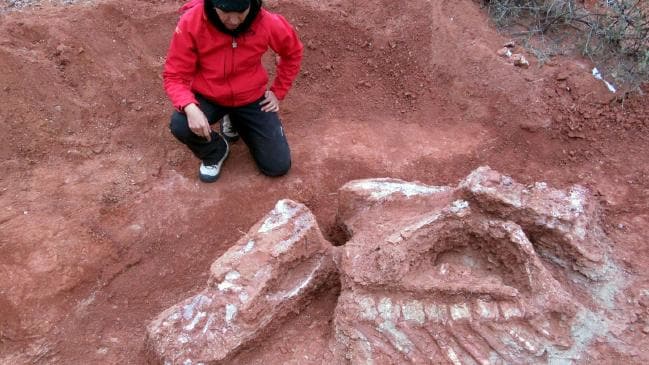Giant dinosaurs lived on Earth much earlier than previously thought, according to a team of excavators in Argentina who discovered the remains of a species 200 million years old.
The species, baptised Ingenia prima, was about three times the size of the largest Triassic dinosaurs from its era.
It was discovered in the Balde de Leyes dig site in San Juan province, 1100km west of the Argentine capital Buenos Aires.
The find was published in the specialist Nature Ecology & Evolution journal on Monday and revealed in Argentina by San Martin University’s Scientific Dissemination Agency.
“As soon as we found it, we realised it was something different,” said Cecilia Apaldetti, a government and San Juan University researcher. “We found a shape, the first giant one among all the dinosaurs. That’s the surprise.”
Excavators found several vertebrae from the neck and tail as well as fore and hind leg bones. The species “exhibits a growth strategy that was unknown until now and indicates that gigantism originated much earlier than was thought,” said Ms Apaldetti, the study’s co-author.
These were “herbivore dinosaurs, quadrupeds, easily recognisable by their very long neck and tail, and from the sauropod group”, she said.
Before this discovery, it was thought that gigantism developed during the Jurassic period, about 180 million years ago.
Fellow co-author Ricardo Martinez believes the species is from “a late Triassic period, possibly 205 million years” ago.
The Triassic period extended from about 250-200 million years ago and the Jurassic from 200-145 million years ago.
The team has been studying the Triassic period. The first of these dinosaurs were small but as they evolved they tended towards gigantism to defend themselves against predators.
AFP

